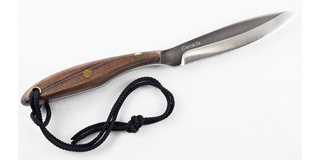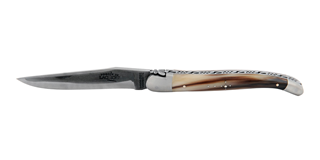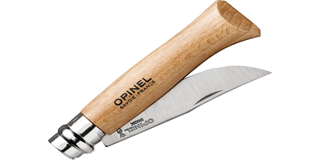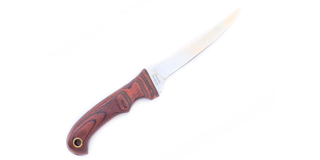Five Great Knives for Waterfowlers
Take your pick from these well-made blades for bird hunters
Take your pick from these well-made blades for bird hunters
By T. Edward Nickens
A knife is the last piece of gear youll use before ducks or geese go into the skillet or the freezer, and a well-designed blade can help make processing birds a much more enjoyable experience. These five knives range from less than 20 bucks to several hundred dollars, and theyll all perform far better than a belt-clip folder or a dull kitchen knife. They just might become as treasured as your favorite shotgun.

Photo www.knivesaustralia.com
Designed in the late 1950s by a Czech knifemaker who immigrated to Nova Scotia and collaborated with Toronto cutler D.H. Russell, the Canadian Belt Knife carries an elliptical blade with a slender, sinuous handle. The #2 Trout and Bird model is slightly smaller than the original. The tip is pointed enough to pierce through fatty skin, the edge has enough belly for deep breasting cuts, and the blade is stout enough to chop through wings and feet. There are tons of knockoffs, but the original is still manufactured by Grohmann Knives of Nova Scotia. Its available with the original sabre grind or a thinner full flat grind, in both carbon and stainless steel. gknives.com

Photo www.spyderco.com
With a sharp tip, four inches of cutting edge, and a relatively thin blade with a flat grind, the Sprig is sort of a grown-up bird and trout knife. Designed by custom knifemaker Phil Wilson of Oregon, the blade performs with the wicked slicing ability of a fillet knife but with more backbone for tougher tasks. The knifes stainless CPM S90V steel is a pelletized alloy featuring tiny carbides for extreme sharpness and juiced with vanadium for wear resistance. It will slice through the sixthor 26thduck as cleanly as the first. The distal taper and handsome forest-green G10 handle keep the knife balanced and pleasing to grip, so youll find yourself using the Sprig for everyday kitchen chores all year long. spyderco.com

Photo www.forge-de-laguiole-usa.com
The Laguiole knife is neither a brand nor a specific model, but a class of French knives revered for nearly two centuries. Its a slender, svelte folding knife of supreme beauty. The backsprings are decoratively filed and capped with a distinctive carved bee or fly. Six to eight inlaid metal pins in the handle form a shepherds cross, so that herdsmen could thrust the open knife into the ground or a loaf of bread and have prayers under the cross. The handles are typically cow horn or olive wood. Despite the ornamentation, these are working knives. The spear point and slightly flexible blade will fillet out a duck or goose breast with surgical precision. Cheap knockoffs abound, so if heritage and authenticity matter, go for the Forge de Laguiole blades. forge-de-laguiole.com

Photo www.opinel-usa.com
The least expensive knife on the list, the Opinel nonetheless sports 125 years of history and an international cult following. Few blades do a better job of filleting out a duck or goose breast. Still, you might be the only one in duck camp to own onea bonus if you ask me. A classic peasant knife with a single folding blade, the original Opinel line is built with a beech handle and a locking collar ring that prevents the open blade from closing. Stainless steel blades are available but stick with the original carbon steel for ease of sharpening, a wicked edge, and the timeless bluing of the blade. The knives come in 10 sizes. I like No. 7 for ducks and No. 9 for geese. They are still built in the Savoie region of France but are widely available. opinel-usa.com

Photo www.charlestonshuckerco.com
When you've been breaking down snow geese for an hour and you're not halfway through the pile, you'll be happy to grip a well-designed knife. The wood handle on this Lowcountry beauty is warm to the touch, with deep finger grooves so you'll know how the blade is oriented even in the weak light of a headlamp. The slightly flexible blade makes quick work of dense breast meat, but it's still stout enough to work through wing and leg joints. And the blade can even be engraved free of charge for a great personalized gift. charlestonshuckerco.com
Ducks Unlimited uses cookies to enhance your browsing experience, optimize site functionality, analyze traffic, and deliver personalized advertising through third parties. By continuing to use this site, you agree to our use of cookies. View Privacy Policy